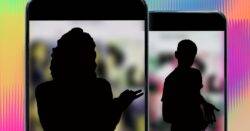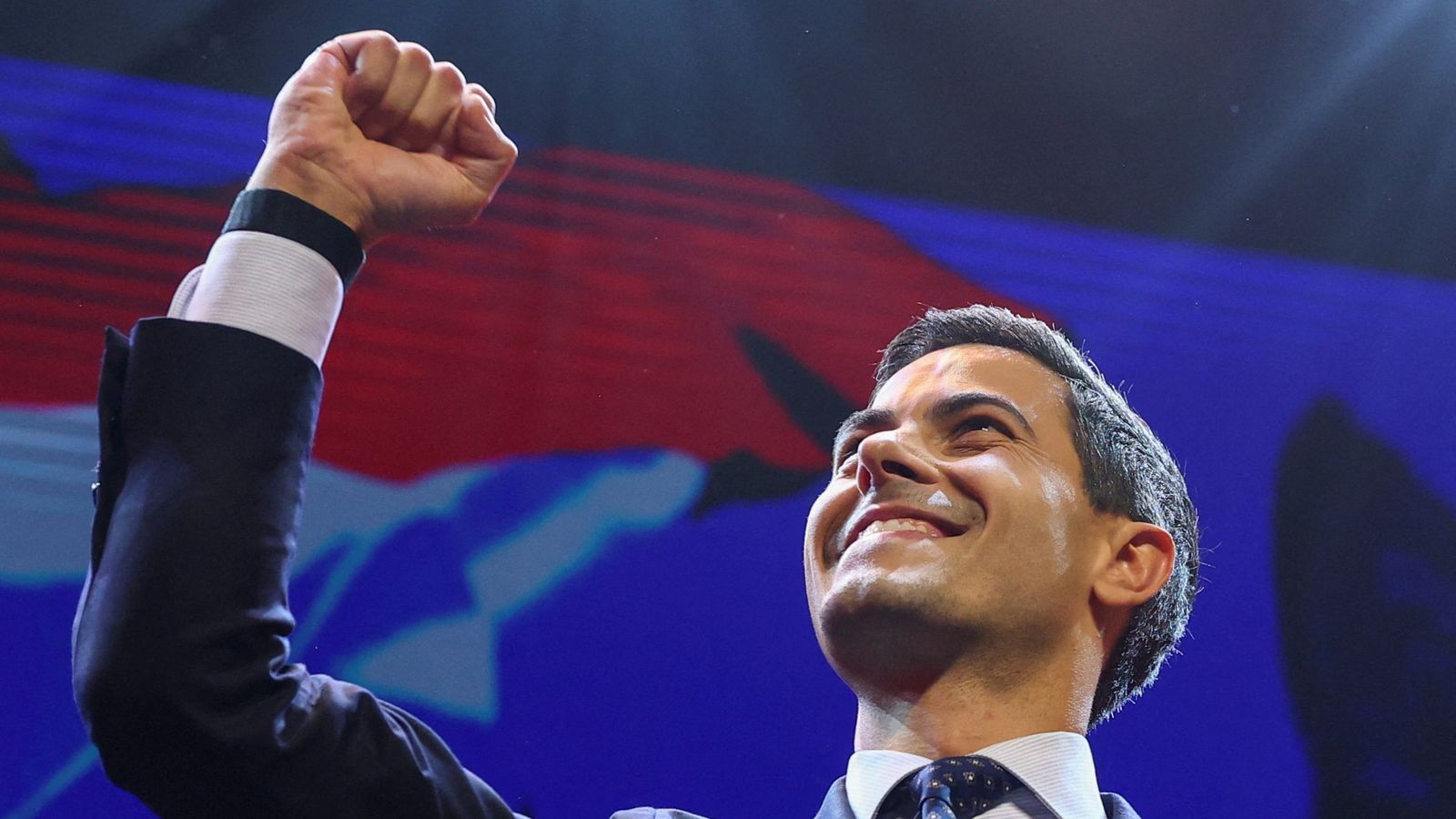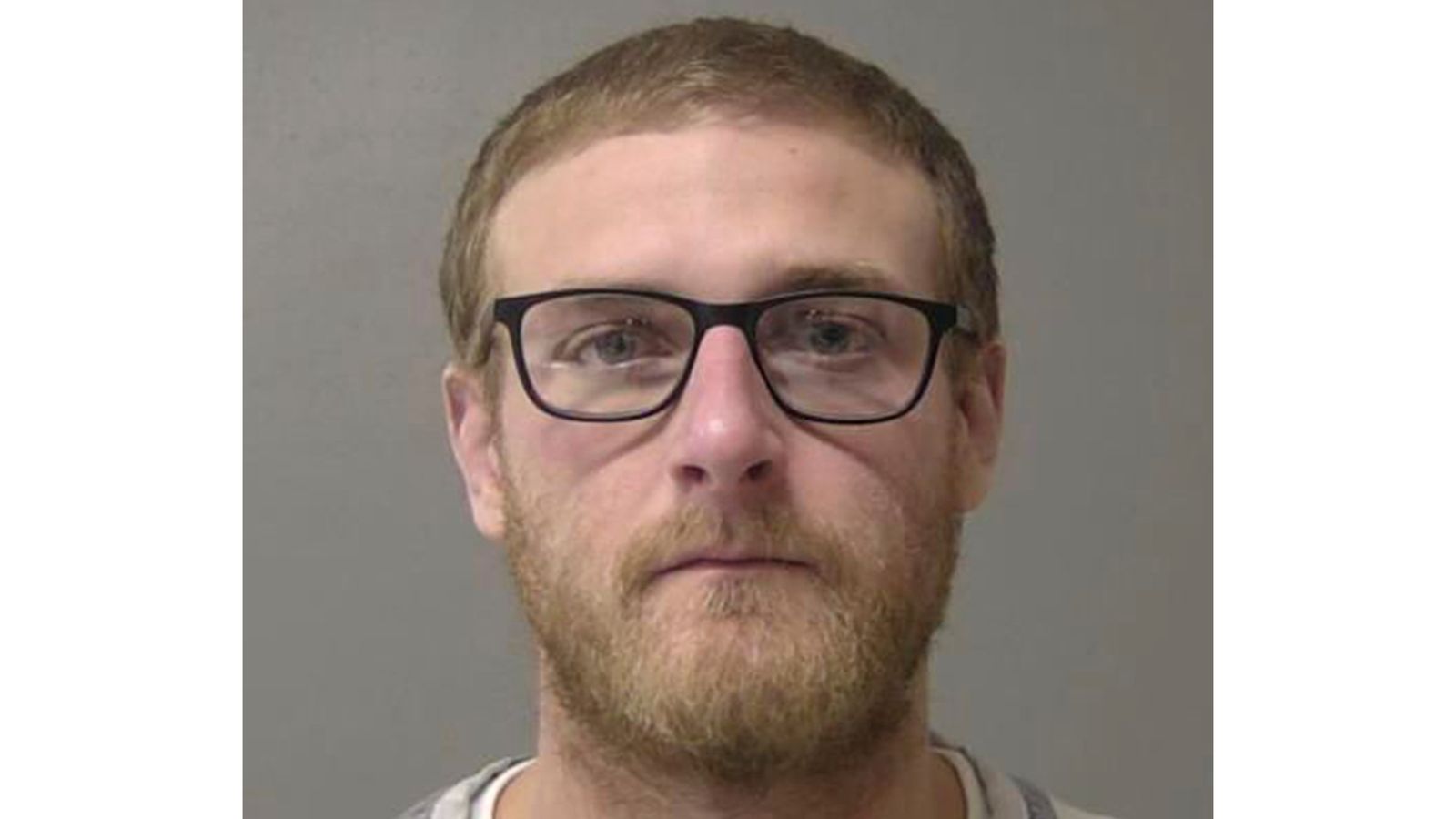Sign language has received more attention in popular culture (Picture: Getty Images)
‘British Sign Language has been created and evolved through generations,’ explains online content creator, Sam Egerton-Kemp.
‘To see hearing people culturally appropriating our language on social media to gain followers causes a lot of frustration and upset.’
Sam, 24, also known as Deaf Chef Official on Instagram, was born deaf, and was diagnosed at nine months old.
Born into a hearing family, he was taught British Sign Language (BSL) by his mum, who attended local classes, and passed on her skills. For him, BSL – his second language after spoken English – is invaluable.
However, Sam, like much of the deaf community, is concerned by a recent spike in incorrect sign language spreading online.
If you search the hashtag #deaftok on TikTok – which currently has more than 119 million views – you’ll find an array of videos of people signing along to popular songs, and ‘teaching’ signs. Some of these video are made by deaf creators, but many are not.
Sam shares videos on Instagram as Deaf Chef Official (Picture: Sam Egerton-Kemp)
In the UK, deaf contestants on popular TV shows have contributed to an interest in signing amongst hearing people. When actress Rose Ayling-Ellis won Strictly Come Dancing in 2021, there was a surge in people enrolling onto BSL courses. And, Love Island’s Tasha Ghouri, who is deaf and wears a cochlear implant, raised awareness of deafness to a new audience, calling it her ‘superpower’.
More recently, smash hit TV show, The Last of Us, featured a character named Sam, who used American Sign Language (ASL). ASL has also been used in the Marvel Cinematic Universe, by deaf characters Echo and Makkari.
But while it’s great to see the world take more of an interest in sign language, those who actually rely on signing to communicate are worried about misinformation, and fake or incorrect signs, spreading online. Lots of videos on TikTok show creators showing off signs, that aren’t actually signs at all.
And these concerns are not always understood by hearing creators.
TikToker, Anthony Eagle Jr, aka @Chrimsan0, recently accused the Deaf community of ‘gatekeeping’ and said, ‘I think it’s really crappy that they keep their language in a box.’
Sign language vs sign systems
Sign Supported English (SSE). This is not sign language, but is a means of communication in which BSL signs are used in English word order. It’s sometimes used by Deaf people who learnt English first, and acquired sign language later in life.
Makaton and ‘baby signs’. Also not a sign language. These systems use signs, spoken English, symbols and pictures. They’re often used to communicate with babies before they learn to speak or for people with communication difficulties.
To some, these arguments might seem justified – many of us will remember learning French or German at school from teachers who did not have either as their first language.
But this is very different. It’s important to remember that BSL was only officially recognised as a language of Great Britain with the BSL Act 2022, and it wasn’t that long ago that the use of it was vehemently discouraged by doctors and teachers.
Until the 1990s, it was forbidden to use BSL in the classroom, as it was seen as a ‘primitive’ form of communication compared with English. Under the ‘oral method’, deaf children were forced to rely on trying to lipread their teachers to understand what was going on. Those who signed at school were often punished.
As a result, generations of deaf Britons grew up traumatised and unable to communicate fluently in either spoken language (English) or BSL. This language deprivation has led to poor mental health outcomes with lifelong repercussions for thousands of deaf people.
While there is greater awareness today about the benefits of ensuring deaf children and their families learn sign language as early as possible, it is still not a reality for many families due to the high cost of learning BSL.
Families of deaf children receive no funding from the UK government to learn to communicate with their child.
Now, while social media is raising awareness of BSL, it’s once again putting the language at risk.
CEO of the British Deaf Association, Rebecca Mansell, explains: ‘The rise in digital technology has represented an enormous breakthrough for Deaf people in both reducing their isolation and empowering them to communicate.
‘However, it has been accompanied by the widespread misrepresentation and cultural appropriation of sign language by hearing people – often with poor signing skills – who “teach” sign language to others online. Let us be clear: these “sign systems” make absolutely no sense to Deaf people.
‘Enough. We are no longer willing to sit back and allow hearing people to appropriate, misrepresent or otherwise abuse our language.’
The issue of misinformation hit the headlines back in October 2022, when popstar Olly Murs posted a video to Instagram, where he signs along to the lyrics of his new song, Die Of A Broken Heart. But the ‘signs’ he was using made little sense, and were incorrect. Olly had actually been taught by a hearing social media influencer, known as Isabella Signs.
‘Deaf’ vs ‘deaf’:
There is sometimes a distinction made between Deaf (with a capital D) to describe Deaf people who identify as culturally Deaf – that is, who prefer to communicate via British Sign Language, versus deaf (with a lowercase d) for those who have hearing loss but otherwise are part of the hearing world. However, some have argued that this is unnecessarily divisive and prefer to use lower-case d deaf for both.
For Sam, the protection of sign language is so important because it holds his community together.
Sam, from Fleet, says: ‘BSL is the language of our community – it’s the language we are passionate about and love. It is very expressive and, for me, comforting to watch.
‘People might not realise that BSL is regional. Just like in spoken English, there are regional accents, and BSL has regional signs. This fascinates me and I’m still learning new signs every day.’
Sam now teaches others sign language on his Instagram page, which he began during Advent in 2021 – a time before Christmas where Christians traditionally take part in charitable efforts.
Sam said: ‘A local lady was asking around, so I offered my skills of posting daily videos in BSL for people to learn from.
‘I was also inspired watching Rose Ayling-Ellis on Strictly. I started posting on TikTok on the December 1, 2021 and gained 10k followers within a month.
‘On January 1, 2022, I started posting on Instagram and have been ever since.
‘I love posting every day and making so many people aware of the beauty of our language. I have many famous celebrities watching my content, such as John Bishop, Liz McClarnon and Layton Williams.’
But with such a large presence online, Sam has noticed the problem with fake signs.
He says: ‘I like to be positive and think about how many more people can access British Sign Language through Instagram, TikTok and Facebook.
‘But people really should have some qualifications to teach BSL, so that hearing people are learning correctly.
‘Likewise, using a hearing actor to play a deaf character is also cultural appropriation. This may be because they are easier to communicate with, but deaf people can do job.
‘It may take a bit more time and patience but the content we create is powerful, expressive and full of emotion.’
For 26-year-old Naomi Smart, learning sign language in her early 20s has helped her find her identity as a deaf person.
Naomi was born deaf in one ear (Picture: Naomi Smart)
Naomi, from London, explains: ‘I was born deaf in one ear. My hearing family were told to treat me as a hearing child, and so I never learnt sign language.’
But as Naomi got older, she wanted to learn more about deafness, and the community that she didn’t quite feel a part of.
She says: ‘I always had this feeling that there was a part of me, of who I was, that I didn’t know enough about.
‘I didn’t really know any other deaf people, so I turned to social media.’
Connecting with others online helped Naomi learn more. She says: ‘I realised that experiences that I thought were exclusive to me – such as relying on lip-reading, or finding it hard to communicate with friends around a dinner table – were common challenges amongst deaf people.’
As she became more involved in the community, Naomi decided to learn BSL – both so she could communicate with her new friends, and to develop a stronger identity.
She says: ‘I learnt about deaf culture and the history of oppression, and felt it was important I learnt BSL.
‘I had one on one lessons with a deaf teacher.’
Naomi now describes herself as a ‘deaf activist’, and says being deaf is a ‘massive part’ of her identity. She too finds it frustrating to see hearing creators appropriate the language online.
She says: ‘There’s this idea of the “hearing saviour”: hearing people who learn BSL to “help”, when actually it’s infantalising and patronising.
‘Inaccurate signs then translates into the real world and the language starts to break down.
More: featured
‘If you want to learn, do so from a deaf teacher, who has lived experience.’
It’s a sentiment that the BDA agrees with.
‘We strongly encourage the British public to take time to educate themselves,’ says Rebecca. ‘Learn BSL from a qualified, fluent, native Deaf teacher in a classroom. Look for your local Deaf club, pub or Facebook group.
‘Seek out Deaf people and make friends with them. Don’t expect to learn BSL from watching a few videos on YouTube made by a hearing person who does not themselves master our rich, complex, visual language.
‘It will take time and effort, but we promise it will be worth it.’
‘The content deaf people create is powerful, expressive and full of emotion.’





